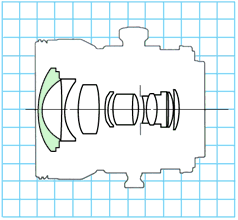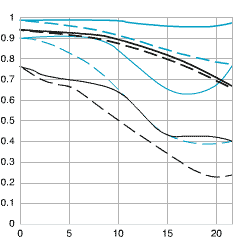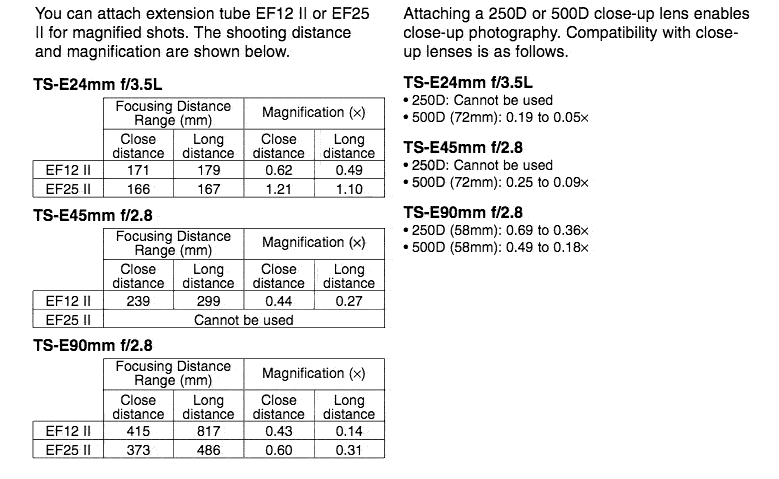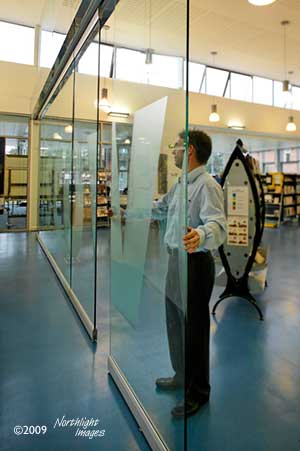
Canon TS-E24mm f/3.5L
|
| Launch date | April 1991 |
| Lens Construction (groups) | 9 |
| Lens Construction (elements) | 11 |
| No. of Diaphragm Blades | 8 |
| Minimum Aperture | 22 |
| Diagonal Angle of View | 84° (without tilt or shift) Image circle dia. 58.6mm |
| Tilt | +-8 degrees |
| Shift | +- 11mm |
| Closest Focusing Distance (m) | 0.3 |
| Maximum Magnifcation (x) | 0.14 |
| Filter Diameter (mm) | 72 |
| Maximum Diameter x Length (mm) | 78 x 86.8 |
| Weight (g) | 570 |


|
A quick guide to MTF charts (which only measure contrast and resolution. Canon's guide to their MTF charts)
|
||
Extension tubes and supplemental lenses

TS-E24mm f/3.5L reviews and articles
- Canon UK | US info page
- Amazon
- Northlight Images - introduction to tilt/shift with the TS-E24
- Fred Miranda
- Digital Picture
- PhotoZone
- SLR Gear
- Lens Review
- ePhotozine
- Canon lens manual (PDF)
- Modifying Canon T/S lenses yourself
- How to focus with tilt
Sample images
Partially shifted upwards. The TS-E24 showed some vignetting and softness at full shift
 .
.
Two shots shifted left and right, stitched together (Canon 1Ds)

Glass doors - lens tilted to maintain focus along length of doors

| Used Canon Lenses • UK: MPB | Park • USA: B&H | Adorama |
 |
| Welcome to EFLens.com: The world's number 1 Canon Review website with every Canon EF Lens. Read all of the reviews, see detailed specifications and check the price. • EF Lens chronology • EF Lens date codes • EF Lens mount details • EF Lens filter sizes • Compare EF-S18-55 versions • Tweet about it • Tell a friend • Send feedback |
 |
| Canon Lens List: • EFLens.com |
 |
| Sigma Lens List: • Manufacturer's Website |
 |
| Samyang/Rokinon List: • Manufacturer's Website |
 |
| Tamron Lens List: • Manufacturer's Website |
 |
| Tokina Lens List: • Manufacturer's Website |
 |
| © 1987 - 2019 NI |
 Overview
Overview